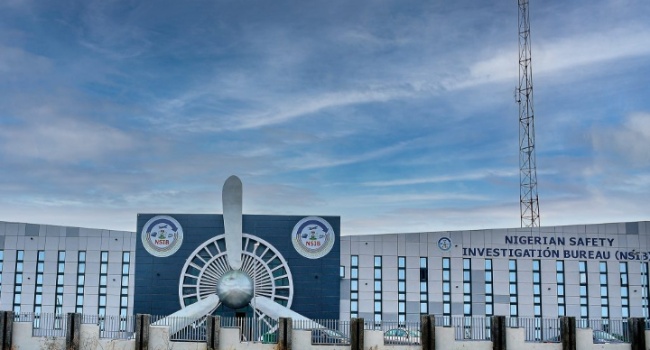US Board Report Blames Pilot For Helicopter Crash That Killed Herbert Wigwe, Family | Sahara Reporters
According to the report, the probable cause of the crash was the pilot's decision to continue the flight under visual flight rules into instrument meteorological conditions (IMC).
The United States National Transportation Safety Board (NTSB) has released its final investigation report on the helicopter crash that killed Herbert Wigwe, former group chief executive officer of Access Holdings Plc, and his family last year.
According to the report, the probable cause of the crash was the pilot's decision to continue the flight under visual flight rules into instrument meteorological conditions (IMC).
SaharaReporters reports that the crash occurred on February 9, 2024, in California, near the Nevada border, and claimed the lives of all six passengers on board, including Wigwe, his wife Doreen, their son Chizi, and Abimbola Ogunbanjo, the former group chairman of Nigerian Exchange Group Plc (NGX Group).
The helicopter, with registration N130CZ, was on a charter flight when it went down.
More than one year after, NTSB investigation found that the pilot likely experienced spatial disorientation while maneuvering the helicopter in IMC, which led to his loss of helicopter control and the resulting collision with terrain.
Spatial disorientation is a phenomenon where pilots become disoriented due to the lack of visual references, leading to a loss of control of the aircraft.
The report also revealed that the helicopter company’s inadequate oversight of its safety management processes was a contributing cause of the crash.
The investigation found that the company failed to ensure that pilots accurately completed and updated the flight risk analysis, logged maintenance discrepancies, and adhered to Part 135 regulations before departure.
According to the report, the pilot had reported an issue with the radar altimeter, which remained non-functional despite troubleshooting efforts.
The radar altimeter is a critical safety device that provides pilots with accurate information about their altitude above the ground. Without a functioning radar altimeter, pilots are more susceptible to spatial disorientation and loss of control.
The NTSB determined that the probable cause of the accident was "the pilot’s decision to continue the visual flight rules flight into instrument meteorological conditions, which resulted in the pilot’s spatial disorientation and loss of control." The report also highlighted the company's inadequate oversight as a contributing factor to the accident.
The investigation report revealed that during the return flight, the pilot had texted the director of maintenance (DOM) about the issue with the radar altimeter. After arriving at the company's flight operations base, the pilot discussed the issue with the company flight follower (who was also the company’s president). A company mechanic performed some troubleshooting on the radar altimeter; however, he was unable to rectify the issue, and the radar altimeter remained non-functional.
Despite knowing about the non-functional radar altimeter, the pilot and the DOM decided to depart on the positioning flight to pick up the passengers.
The report stated that the pilot and flight follower had a phone conversation and exchanged text messages after arrival, but they did not discuss the status of the radar altimeter or weather conditions.
The NTSB's findings highlight the importance of robust safety management processes in the aviation industry. The report's conclusion emphasises the need for helicopter companies to prioritise safety and ensure that pilots adhere to regulations and safety protocols.
The crash of the helicopter that killed Herbert Wigwe and his family is a tragic reminder of the risks associated with aviation and the importance of safety protocols.
The NTSB's investigation report provides valuable insights into the causes of the accident and highlights the need for improved safety measures in the industry.
Part of it reads: “The National Transportation Safety Board (NTSB) determines the probable cause of this accident to be: The pilot’s decision to continue the visual flight rules flight into instrument meteorological conditions, which resulted in the pilot’s spatial disorientation and loss of control.
“Contributing to the accident was the company’s inadequate oversight of its safety management processes, including ensuring the pilots were accurately completing and updating the flight risk analysis, logging maintenance discrepancies, and ensuring the helicopter met Part 135 regulations before departure.
“During the return flight, the pilot texted the director of maintenance (DOM) about the issue. After arriving at the company’s flight operations base, the pilot discussed the issue with the company flight follower (who was also the company’s president).
“"A company mechanic performed some troubleshooting on the radar altimeter; however, he was unable to rectify the issue, and the radar altimeter remained non-functional," it added.
“"The mechanic reported that the pilot and the DOM were aware that the radar altimeter was not functioning, yet they departed at 1822 on the positioning flight to pick up the passengers.
“About 40 minutes later, the positioning flight landed at the airport to pick up the charter passengers. After arrival, the pilot and flight follower had a phone conversation and exchanged text messages, but they did not discuss the status of the radar altimeter or weather conditions.”













